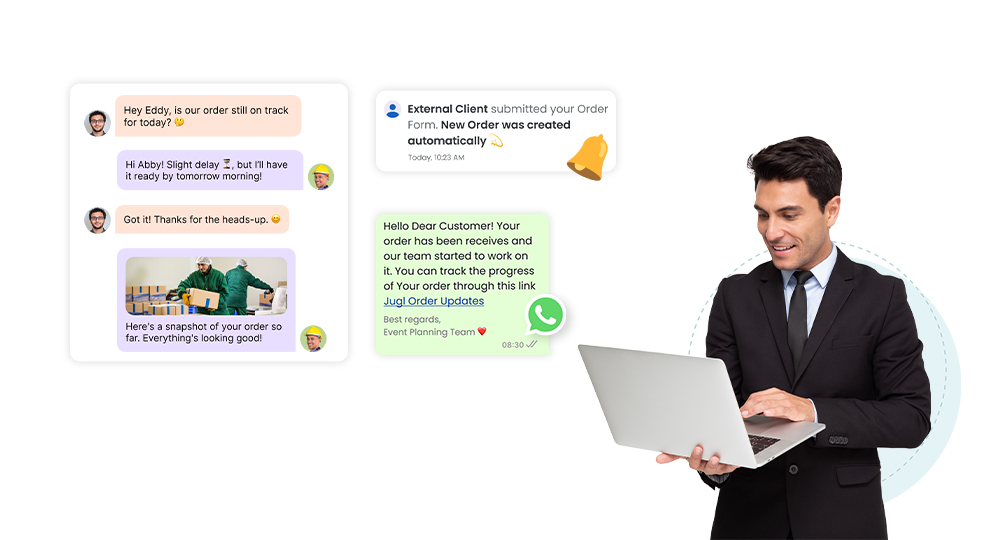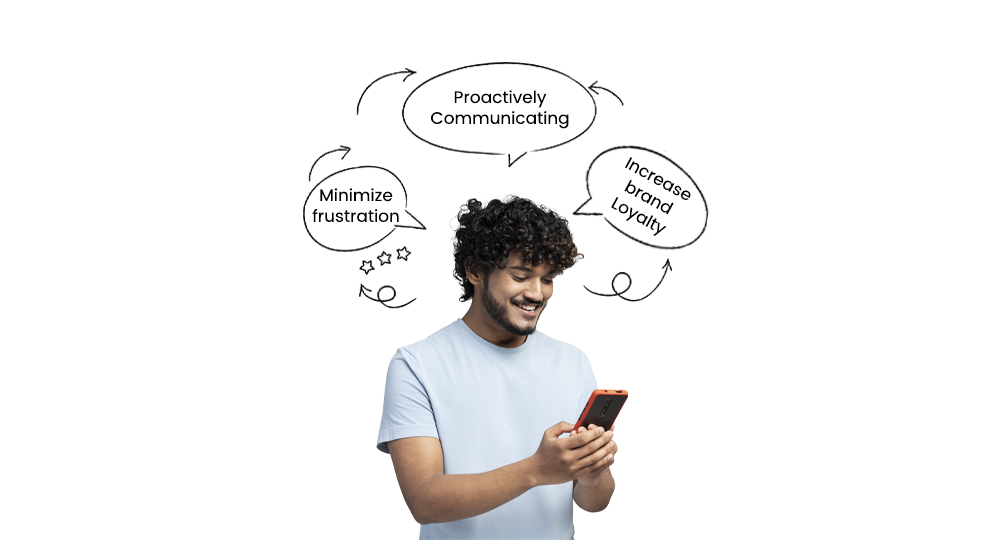In today's competitive business landscape, keeping customers informed about their orders is crucial for enhancing customer satisfaction and loyalty.
Whether you run an eCommerce store, a service-based business, or a retail operation, providing timely and clear order updates can build trust and reduce customer frustration.
Why Are Customer Order Updates Important?
Customers expect real-time updates about their purchases. A lack of communication can lead to frustration, chargebacks, and poor reviews.Implementing a structured approach to order status updates can:
Reduce customer inquiries and support requests.
Enhance transparency, fostering trust in your brand.
Improve repeat business by offering a seamless experience.
Let's explore six key strategies to ensure your customer order updates are effective, engaging, and error-free.
1. Automate Order Status Updates
One of the most effective ways to keep customers informed is through automated order status notifications.
Using an order management system or an app like Jugl, businesses can send real-time order tracking updates via email, SMS, or WhatsApp.
Best Practices:
Use automated triggers for every key stage: order confirmation, shipping, and delivery.
Ensure messages are clear, concise, and personalized.
Offer a tracking link for easy access to real-time updates.

Common Mistakes to Avoid:
❌ Sending too many notifications leading to spam complaints. ❌ Using generic messages that lack personalization. ❌ Failing to provide a tracking option for customers.

CEO Quote:
Elon Musk: "Brand is just a perception, and perception will match reality over time." Providing real-time order updates helps create a reliable brand perception.
2. Use Multiple Communication Channels
Customers have different preferences for receiving updates. Offering multichannel order notifications ensures that customers receive information on their preferred platform, whether it’s email, SMS, WhatsApp, or push notifications.
Best Practices:
Allow customers to choose their preferred notification channelat checkout.
Ensure messages are consistent across all channels.
Use read receipts or delivery confirmations to track engagement.
Common Mistakes to Avoid:
❌ Using only one communication method, limiting accessibility. ❌ Overloading customers with the same message on multiple channels. ❌
Not optimizing messages for mobile users.
Did you know?
Jugl offers seamless WhatsApp integration, allowing businesses to provide automated order tracking updates without requiring customers to download additional apps.
3. Provide Estimated Delivery Dates and Real-Time Tracking
Customers expect to know when their order will arrive. Providing an estimated delivery date along with a tracking link can significantly reduce customer anxiety and inquiries.

Best Practices:
Display an estimated delivery date at checkout and confirm via email.
Integrate with real-time tracking systems like FedEx, UPS, or local couriers.
Send a notification for delays with a revised estimated delivery date.
Common Mistakes to Avoid:
❌ Giving vague delivery estimates (e.g., "Your order will arrive soon"). ❌ Not updating customers when delays occur. ❌ Using tracking links that require multiple logins or redirects.

Business Tip:
Steve Jobs: "Get closer than ever to your customers. So close that you tell them what they need well before they realize it themselves." Being proactive in order updates builds a stronger relationship with customers.
4. Personalize Customer Updates
Generic updates can feel robotic and impersonal. Personalizing notifications makes the experience more engaging and customer-friendly.
Best Practices:
Use the customer’s name in notifications.
Include product details to reaffirm the purchase.
Offer a personalized thank-you message post-purchase.
Common Mistakes to Avoid:
❌ Sending bulk, impersonal updates. ❌ Failing to use customer-specific order details. ❌ Ignoring customer feedback opportunities in updates.
5. Be Proactive in Handling Delays and Issues
Delays are sometimes unavoidable, but proactively communicating with customers can minimize frustration and increase brand loyalty.

Best Practices:
Notify customers immediately when an issue arises.
Provide a clear reason for the delay and an updated ETA.
Offer compensation like a discount or free shipping for major delays.
Common Mistakes to Avoid:
❌ Ignoring delays and waiting for customers to complain. ❌ Providing uncertain or misleading information about the delay. ❌ Failing to apologize or offer alternatives.

Business Tip:
Jeff Bezos: “If you do build a great experience, customers tell each other about that. Word of mouth is very powerful.” Keeping customers informed during delays turns a bad experience into a positive one.
6. Request Feedback After Order Completion
Following up with customers after order delivery can help build brand trust and encourage repeat business. Encouraging reviews also improves your brand reputation and credibility.
Best Practices:
Send a post-delivery email or SMS thanking the customer.
Ask for a review or rating and provide a quick feedback form.
Offer a discount or reward points for future purchases.
Common Mistakes to Avoid:
❌ Sending feedback requests too soon or too late. ❌ Making the review process complicated. ❌ Not addressing negative feedback proactively.
Conclusion
Effective customer order updates are key to improving customer satisfaction, brand loyalty, and operational efficiency.
Businesses that automate notifications, personalize updates, offer real-time tracking, and communicate proactively can significantly enhance the post-purchase experience.
Implementing these strategies not only reduces customer service inquiries but also fosters long-term customer relationships.
Summary of Common Mistakes and Solutions
| Common Mistakes | Solutions |
|---|---|
| Sending too many notifications | Optimize frequency and allow customer preferences |
| Using generic, impersonal messages | Personalize updates with customer details |
| Not providing real-time tracking | Integrate with tracking systems for transparency |
| Ignoring delays and waiting for complaints | Proactively inform customers about issues |
| Using only one communication channel | Offer multichannel updates (email, SMS, WhatsApp) |
| Not requesting feedback after delivery | Send post-delivery surveys to improve service |
✅ Want to improve your order update process? Start implementing these strategies today!
Ready to streamline your business operations?
Sign up for Jugl today and experience the future of business management! 🚀
Which Business Management Tool is Right for You?
Choosing the right business management solution can make all the difference in efficiency and growth. Choose between Zoho, Monday.com, and Jugl App? Each has unique strengths—find out which one best suits your business needs.
Share this article
You might also like

How to stop losing orders and keep customers happy in 2025

Eduardo Amaya
7th Jan, 2025

Top 5 reasons why you should stop using Monday.com in 2025

Ram Kumar
7th Jan, 2025

Why 8 of 10 business owners are re-thinking service ticket management?

Arun Kumar
7th Jan, 2025


